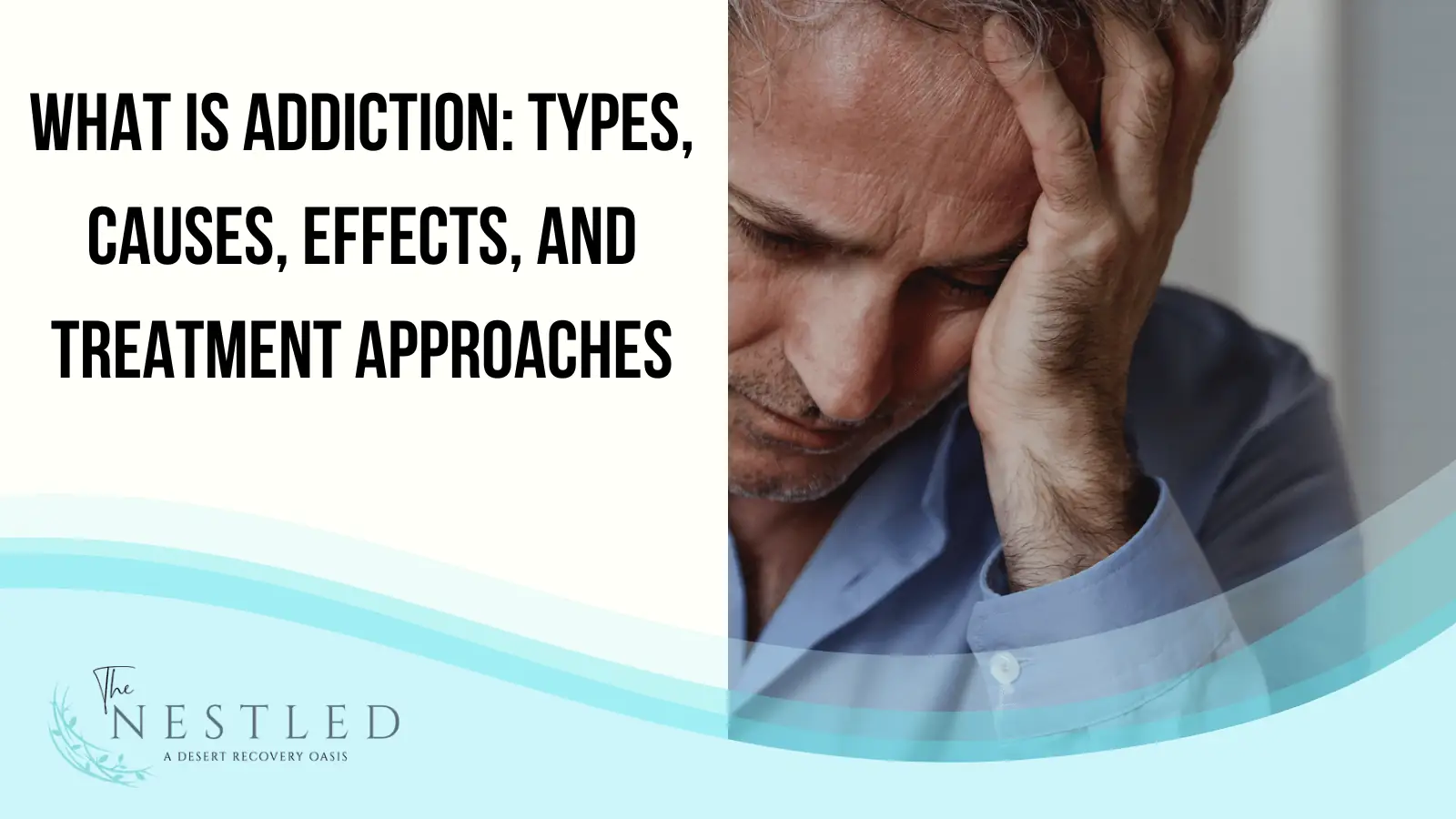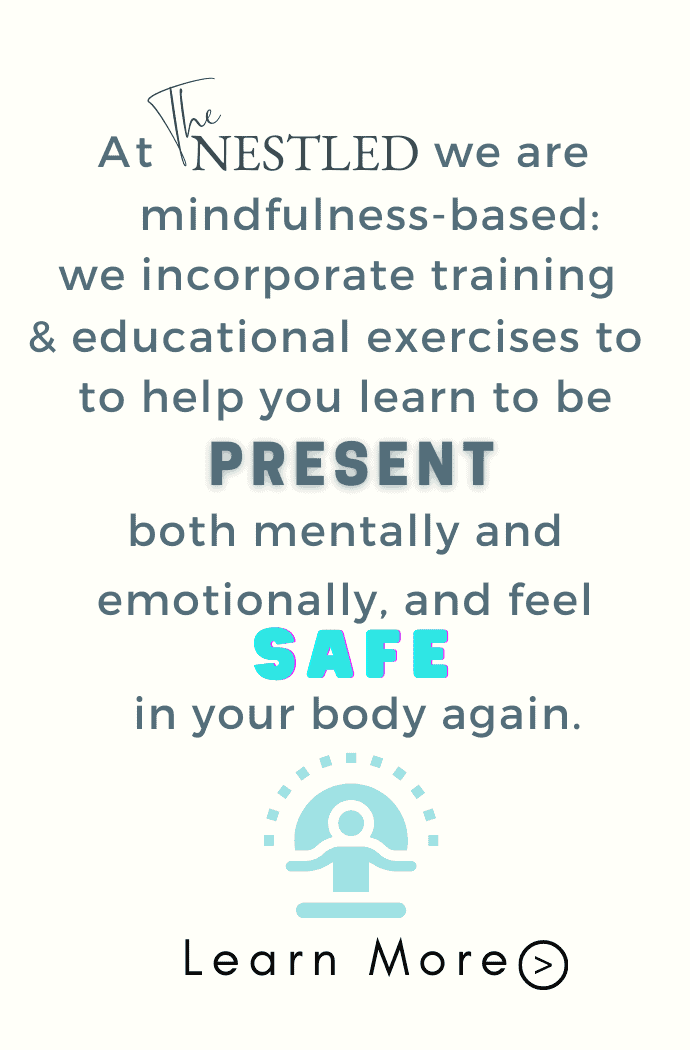Addiction is the uncontrollable use of substances or engagement in behaviors, despite negative consequences. It involves a range of dependencies, including substance addictions and behavioral addictions.
The causes of addiction are a combination of genetic, environmental, and psychological factors. Genetic predispositions, family history, trauma, stress, mental health conditions, and social influences can all contribute to the development of addictive behaviors.
Beyond the person struggling with it, addiction can severely affect an addict by straining their relationships with loved ones, hindering performance at work, leading to serious health problems, and diminishing their overall quality of life.
Notwithstanding, you can fight addiction and promote recovery through detoxification and medication-assisted therapy, psychological therapies like cognitive-behavioral therapy, and motivational interviewing.
What is addiction?
Addiction is a chronic condition identified by an uncontrollable use of substances or engagement in certain behaviors, despite the negative consequences they bring. It is a complex and multifaceted issue that affects the brain and behavior of individuals.
When someone is addicted, they have a strong and compulsive craving for the substance or behavior, and they may continue to engage in it even when it causes harm to their physical and mental health, relationships, and overall well-being.
Addiction requires understanding, support, and treatment to help addicts regain control of their lives.
What are the types of addiction?
Addiction can manifest in different forms, encompassing substance addictions, behavioral addictions, and process addictions. Let’s look at each of them below:
1. Substance Addictions
This includes dependencies on substances such as opioids, cocaine, amphetamines, hallucinogens, marijuana, and prescription medications.
Alcohol addiction, also known as alcoholism, is a form of substance addiction. It is characterized by a strong craving for alcohol and the inability to control or limit consumption.
Nicotine addiction, primarily through tobacco use, is another prevalent form of addiction. Nicotine is highly addictive, leading to a strong dependence on tobacco products like cigarettes, cigars, or chewing tobacco.
2. Behavioral Addictions
Unlike substance addictions that involve dependence on drugs or alcohol, behavioral addictions are excessive preoccupation with certain activities or behaviors. These behaviors become the primary focus of an individual’s life, often leading to a loss of control and disruption in various areas, such as relationships, work or school, and personal well-being.
Behavioral addictions can take different forms, such as} gaming, internet use, shopping, eating, or sexual behaviors.
3. Love and Relationship Addiction
Love and relationship addiction refers to a pattern of seeking validation, approval, and emotional fulfillment through romantic relationships. Individuals with this addiction may become emotionally dependent on their partners, exhibit clingy or possessive behaviors, and experience a fear of abandonment.
4. Work Addiction
Also known as workaholism, work addiction involves an excessive and compulsive need to work and a preoccupation with work-related activities. Individuals with work addiction often prioritize work above other areas of life, leading to neglect of personal relationships, health, and leisure activities.
Signs of addiction
It’s important to remember that addiction can manifest differently in individuals, and not all signs may be present in every case. However, here are some common signs and symptoms that may indicate the presence of addiction:
- Changes in physical appearance, such as sudden weight loss or weight gain
- Unexplained tremors, slurred speech, or impaired coordination
- Loss of control over substance use or engagement in addictive behaviors
- Social withdrawal and isolation from friends and family
- Cravings and obsessive thoughts about the substance or behavior
- Anxiety, depression, or other mental health issues
Always remember that these symptoms can vary depending on the type and severity of the addiction.
Causes of addiction
The development of addiction is a complex process influenced by a variety of factors. Here are some of the key factors that contribute to the development of addiction:
1. Genetic Factors
Some people may have a genetic vulnerability that makes them more susceptible to developing addiction. A family history of addiction can increase the risk, suggesting a genetic component in addiction development.
2. Brain Chemistry and Biology
Addiction involves changes in brain chemistry and neural pathways. Substance abuse can lead to the release of neurotransmitters, such as dopamine, which play a role in the brain’s reward system.
Over time, the brain may become dependent on the substance to function properly, leading to addiction.
3. Environmental Factors
Environmental factors can significantly impact addiction risk. For example, growing up in a family with substance abuse or dysfunctional patterns can contribute to a higher risk of addiction.
Also, the influence of peers who engage in substance use or addictive behaviors can increase the likelihood of developing an addiction.
4. Psychological Factors
Individual psychological factors can contribute to addiction development. Some of these factors include conditions like depression, anxiety, or trauma-related disorders are often linked to addiction.
A person with any of these mental disorders may turn to substances as a way to self-medicate or alleviate emotional distress.
What are the effects of addiction?
Addiction can have profound and far-reaching effects on various aspects of an individual’s life. Some of the effects of addiction are:
1. Physical Health
Chronic substance abuse can damage vital organs, such as the liver, heart, and lungs. It can also increase the risk of infectious diseases, respiratory issues, cardiovascular problems, and other medical complications.
2. Mental Well-being
Addiction often co-occurs with mental health disorders. Substance abuse can exacerbate existing mental health conditions or contribute to the development of new ones. Common mental health effects of addiction include depression, anxiety, mood swings, paranoia, and cognitive impairments.
3. Relationships
Addiction can strain relationships with family, friends, and romantic partners. Most people with addiction may prioritize their addictive behaviors over maintaining healthy connections, leading to conflicts, trust issues, and emotional distance. Relationships may deteriorate, leading to social isolation and a lack of support.
4. Work or School Performance
Addiction may lead to absenteeism, tardiness, decreased motivation, poor concentration, and impaired decision-making abilities. This can result in academic failure, loss of employment, financial instability, and a damaged professional reputation.
5. Financial Stability
Very often, you will find addicts spending a significant amount of money to support their addictive behaviors. This can lead to financial strain, debt, and even legal issues. Financial instability can further cause stress and contribute to a cycle of addiction.
If left untreated, addiction can also lead to Increased risk of accidents, injuries, and involvement in criminal activities
Different stages of addiction
According to the American Addiction Centers (AAD), there are six stages of addiction and they are:
1. Initial Use
The initial use stage of addiction marks the beginning of an individual’s interaction with a substance or engagement in an addictive behavior. It is a critical phase where curiosity, experimentation, and various external factors play a role in initiating the process of addiction.
Curiosity often serves as a primary motivator during this stage as Individuals may become intrigued by substances or behaviors due to exposure through friends, family, media, or their environment. For example, a teenager attending a party where alcohol is present may experience curiosity about its effects and decide to try it.
Peer influence can also be a significant factor in the initial use stage. Friends or acquaintances who engage in substance use or addictive behaviors may influence others to join in. The desire to fit in, be accepted, or be seen as part of a social group can motivate individuals to try substances or engage in behaviors they may not have considered otherwise.
2. Abuse
During the abuse stage, what may have initially started as a casual or experimental experience begins to take a more problematic and destructive turn.
One of the key indicators of the abuse stage is the loss of control over consumption. The addict may find themselves reaching for the substance or engaging in the behavior more frequently, seeking out opportunities to indulge in their addictive tendencies.
Physically, the abuse stage can take a toll on the body. For instance, heavy alcohol or drug use may lead to liver damage, respiratory issues, cardiovascular problems, or other health complications. The individual may experience frequent hangovers, withdrawal symptoms, or physical discomfort when attempting to cut back or quit.
3. Tolerance
The tolerance stage of addiction is a critical phase that occurs as the body adapts to the presence of a substance or the engagement in a particular behavior. It signifies a physiological response to prolonged and repeated exposure to the addictive stimulus.
During this stage, the addict finds that they require increasing amounts of the substance or behavior to achieve the desired effect or level of satisfaction. The body becomes less responsive to the substance or behavior that initially produced the desired effects.
Consider a person who regularly consumes alcohol. Initially, a few drinks may provide them with a sense of relaxation and social ease. However, as tolerance develops, they find that they need to consume progressively larger quantities of alcohol to achieve the same level of intoxication or relaxation. What once sufficed to reach their desired state now falls short, leading to a cycle of increased consumption to compensate for the diminished effects.
4. Dependence
Physical dependence is a hallmark of the dependence stage. Prolonged and consistent exposure to the addictive substance or behavior causes physiological adaptations within the body.
These adaptations lead the body to rely on the presence of the addictive stimulus to maintain a sense of equilibrium. When the behavior is abruptly removed or significantly reduced, the body reacts with withdrawal symptoms.
Withdrawal symptoms are a defining feature of the dependence stage. When the addictive substance or behavior is abruptly discontinued or significantly reduced, the body and mind react with a range of distressing symptoms. These symptoms can vary depending on the specific addiction but often encompass both physical and psychological manifestations.
Physical withdrawal symptoms can include sweating, nausea, headaches, tremors, muscle aches, and increased heart rate. Psychological withdrawal symptoms may involve anxiety, depression, irritability, intense cravings, difficulty concentrating, and disturbed sleep patterns.
These symptoms can be highly challenging to endure, and they often act as powerful motivators for individuals to continue using the substance or engage in addictive behavior to avoid or alleviate the discomfort they experience during withdrawal.
5. Addiction
As addiction progresses to the addiction stage, individuals often develop a tolerance to the addictive substance or behavior. This means that over time, they require larger amounts of the substance or increased engagement in the behavior to achieve the desired effect. The escalating tolerance can lead to even more excessive and dangerous patterns of consumption or engagement.
For example, in the case of opioid addiction, a drug addict may need higher doses of opioids to experience the same level of pain relief or euphoria that they initially obtained from lower doses. This tolerance escalation can contribute to a vicious cycle of increased substance use, as individuals chase the elusive initial high or seek relief from withdrawal symptoms.
6. Relapse
Relapse refers to a return to substance use or engagement in the addictive behavior after a period of abstinence. Relapse is often triggered by various factors that increase an individual’s vulnerability to resuming addictive behaviors.
These triggers can be internal, such as intense emotions, stress, or physical discomfort. External triggers may include environmental cues, social settings, or specific people associated with past substance use or addictive behaviors.
Certain circumstances can also pose a higher risk of relapse for individuals in recovery. These situations may expose them to familiar environments, social networks, or activities associated with their past substance use or addictive behaviors.
What are the treatment approaches for addiction?
To treat addiction, there are different strategies that one can implement. Below are some of them:
1. Behavioral Therapies
Behavioral therapies form an essential component of addiction treatment. They aim to modify unhealthy behaviors, develop coping mechanisms, and promote long-term recovery. Some commonly used behavioral therapies include Cognitive Behavioral Therapy (CBT), contingency management, and motivational interviewing.
2. Medications
Medications like methadone, antidepressants, and naltrexone are particularly helpful for substance addictions. They can help manage withdrawal symptoms, reduce cravings, and normalize brain chemistry.
3. Support Groups
Support groups provide individuals with addiction a safe and understanding environment to connect with others who have similar experiences. These groups offer peer support, guidance, and encouragement throughout the recovery process.
4. Rehabilitation Programs
Rehabilitation programs, often referred to as rehab, offer structured and intensive treatment for addiction. These programs can be offered on an inpatient or outpatient basis and typically involve a combination of therapies, counseling, education, and support.
Find Freedom from Addiction With The Nestled
Every person’s addiction history, underlying causes, and circumstances are unique. This is why it’s necessary to seek individualized treatment plans. Personalized plans also allow for flexibility and the ability to modify the treatment approach as needed, ensuring it remains effective throughout the recovery journey.
At The Nestled Recovery Center, we always provide the necessary support to people living with an addiction. If you or someone you know is struggling with addiction, remember that help is available. Reach out to us today. Together, we can create a supportive environment where you can find the strength and resources to overcome addiction and get on a path to lasting recovery.








